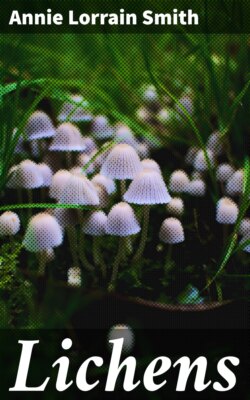Читать книгу Lichens - Annie Lorrain Smith - Страница 40
На сайте Литреса книга снята с продажи.
A. Types of Algae
ОглавлениеThe algal constituents of the lichen thallus belong to the two classes, Myxophyceae, generally termed blue-green algae, and Chlorophyceae which are coloured bright-green or yellow-green. Most of them are land forms, and, in a free condition, they inhabit moist or shady situations, tree-trunks, walls, etc. They multiply by division or by sporulation within the thallus; zoospores are never formed except in open cultivation. The determination of the genera and species to which the lichen algae severally belong is often uncertain, but their distribution within the lichen kingdom is as follows:
a. Myxophyceae associated with Phycolichens. The blue-green algae are characterized by the colour of their pigments which persists in the gonidial condition giving various tints to the component lichens, and by the gelatinous sheath in which most of them are enclosed. This sheath, both in the lichen gonidia[277] and in free-living forms, imbibes and retains moisture to a remarkable extent and the thallus containing blue-green algae profits by its power of storing moisture. Myxophyceae form the gonidia of the gelatinous lichens as well as of some other non-gelatinous genera. Several families are represented[278]:
Fam. Chroococcaceae. This family includes unicellular algae with thick gelatinous sheaths. They increase normally by division, and colonies arise by the cohesion of the cells. Several genera form gonidia:
1. Chroococcus Naeg. Solitary or forming small colonies of 2-4-8 cells (Fig. 16) generally surrounded by firm gelatinous colourless sheaths in definite layers (lamellate). Chroococcus is considered by some lichenologists to form the gonidium of Cora, a genus of Hymenolichens.
2. Microcystis Kütz. Globose or subglobose cells forming large colonies surrounded by a common gelatinous layer (gonidia of Coriscium).
